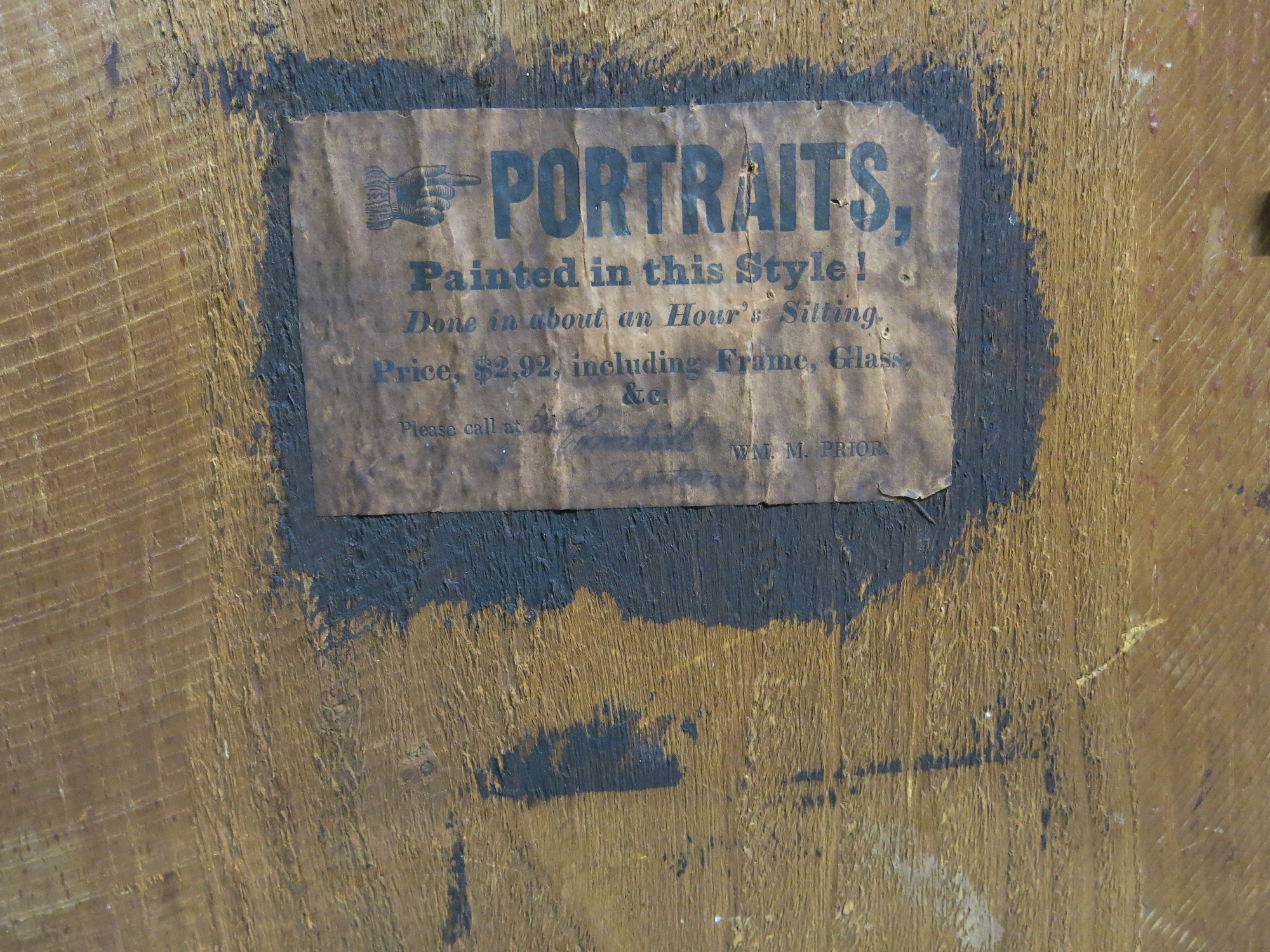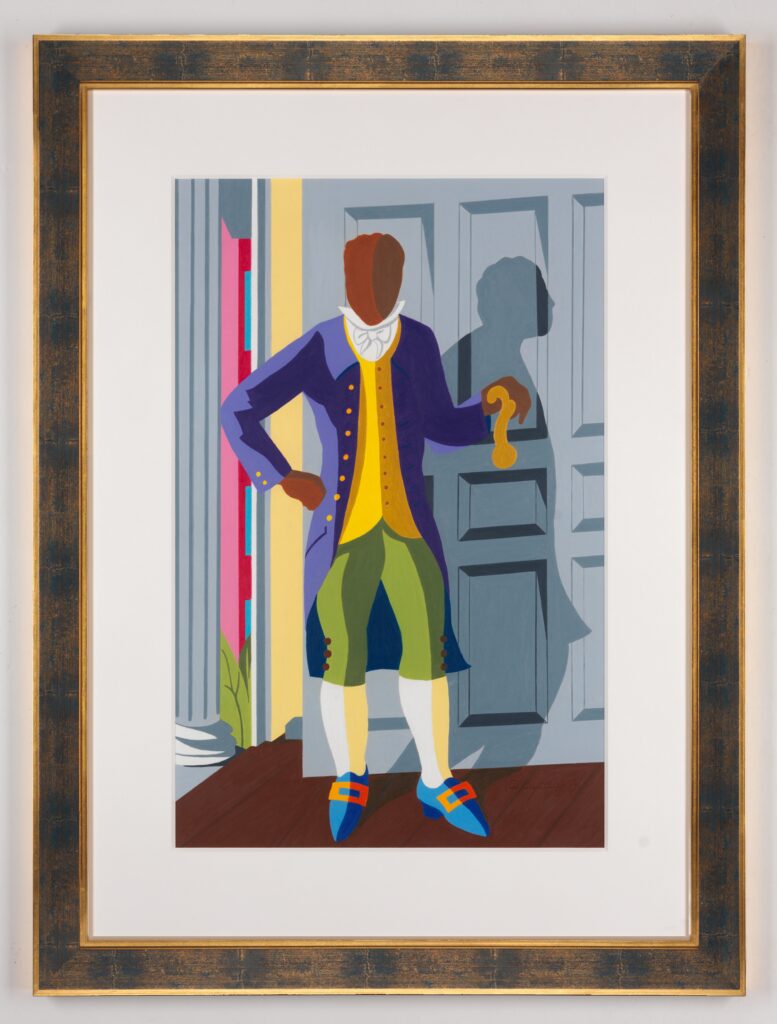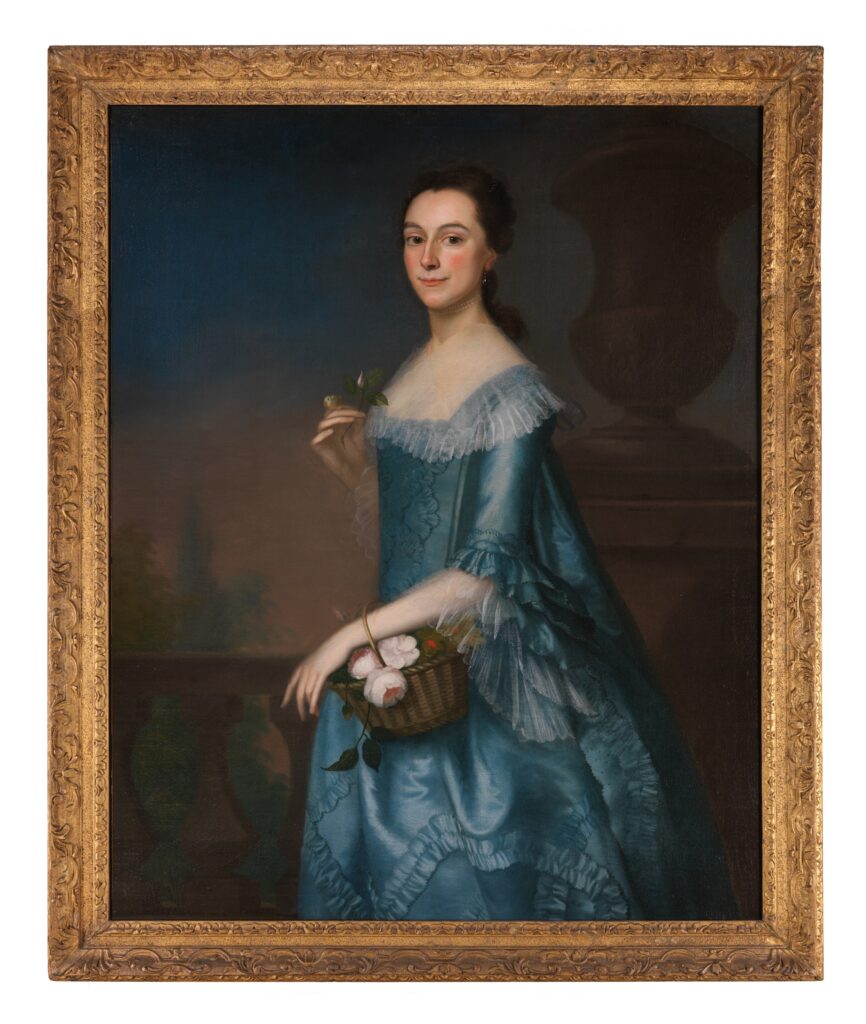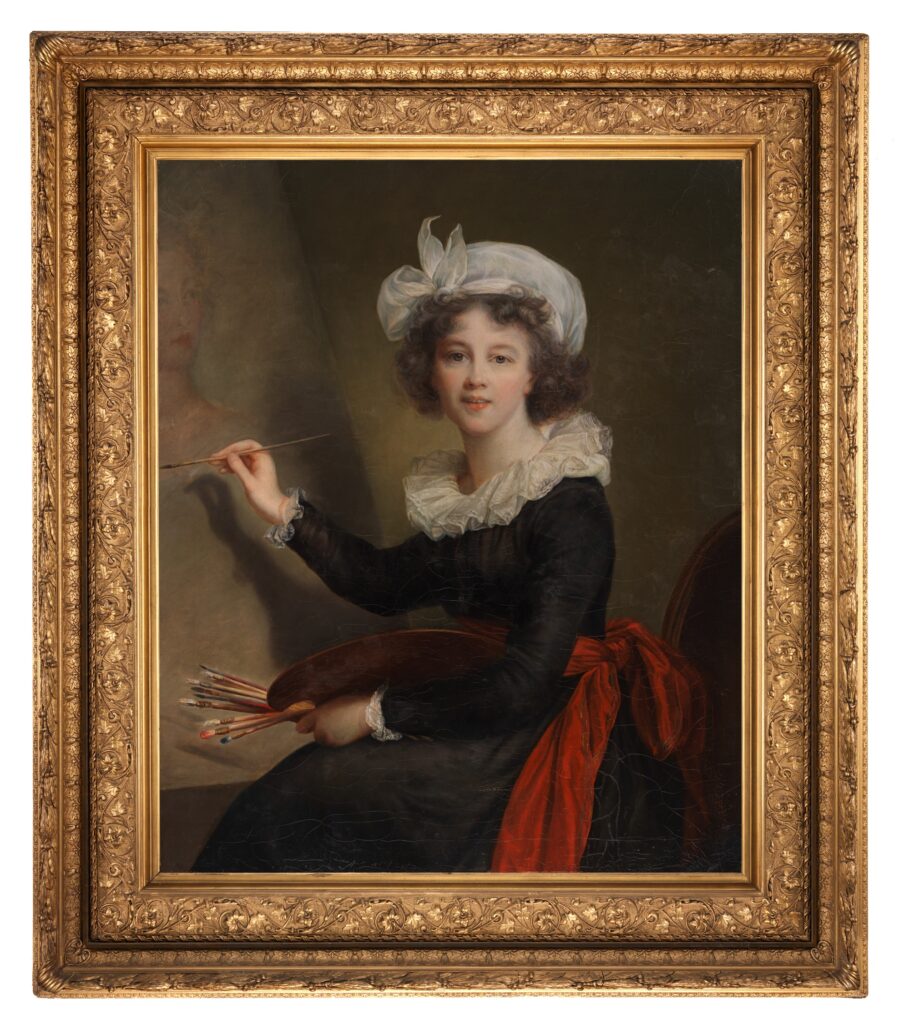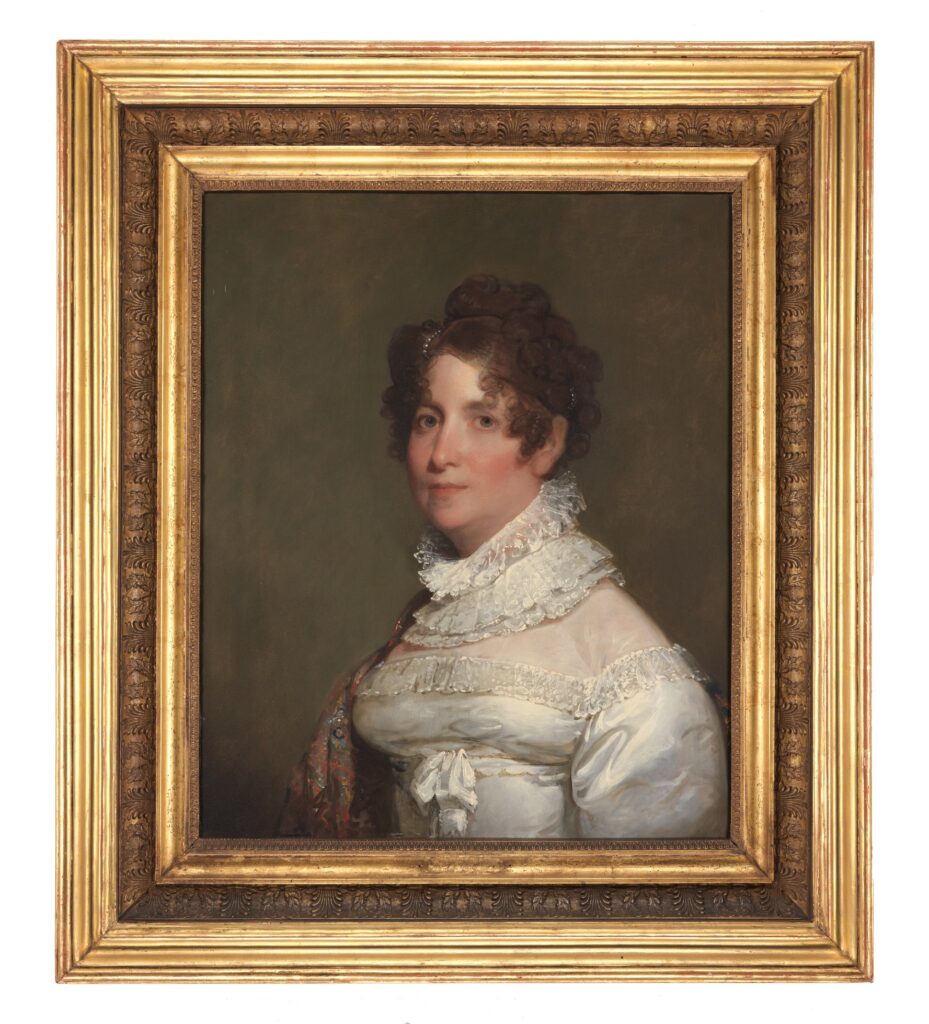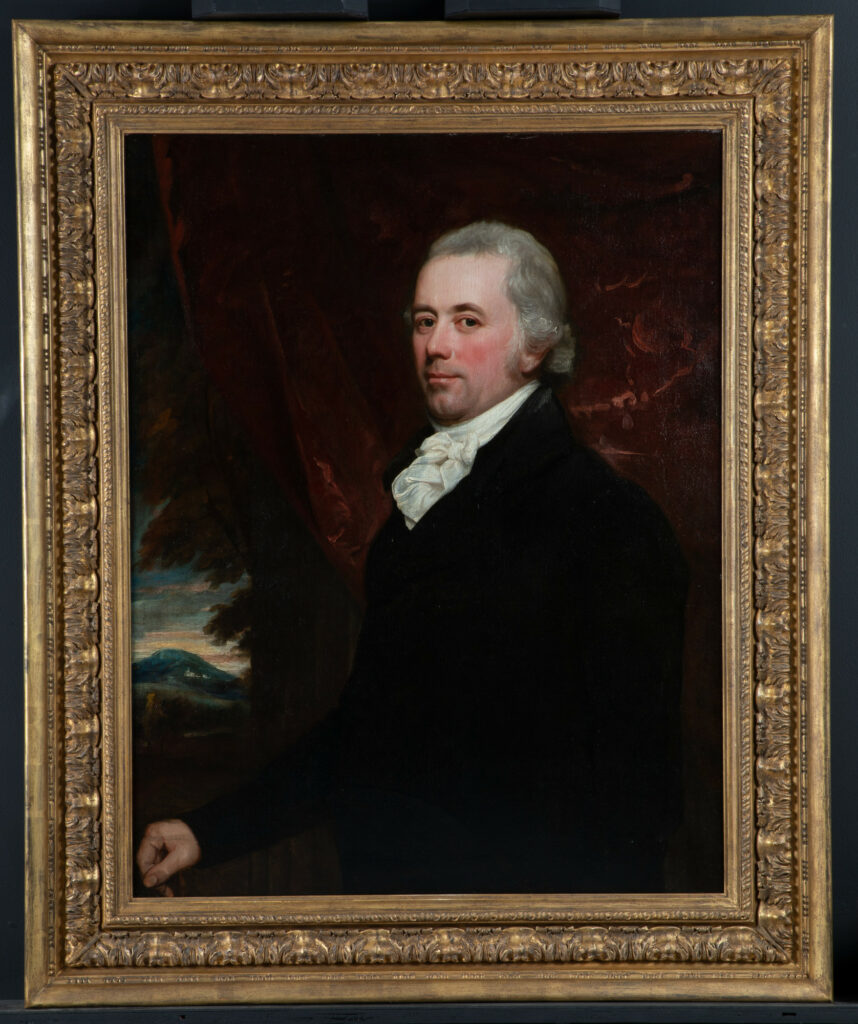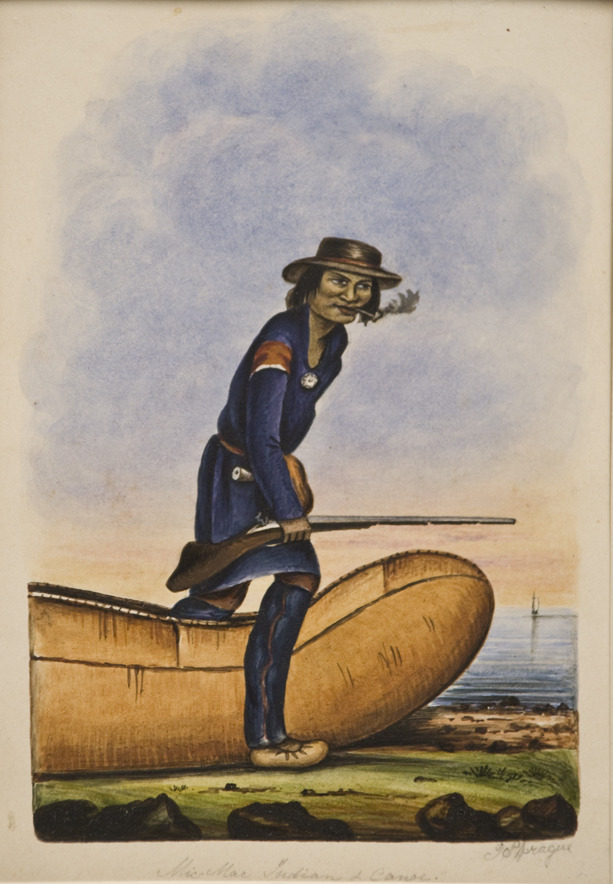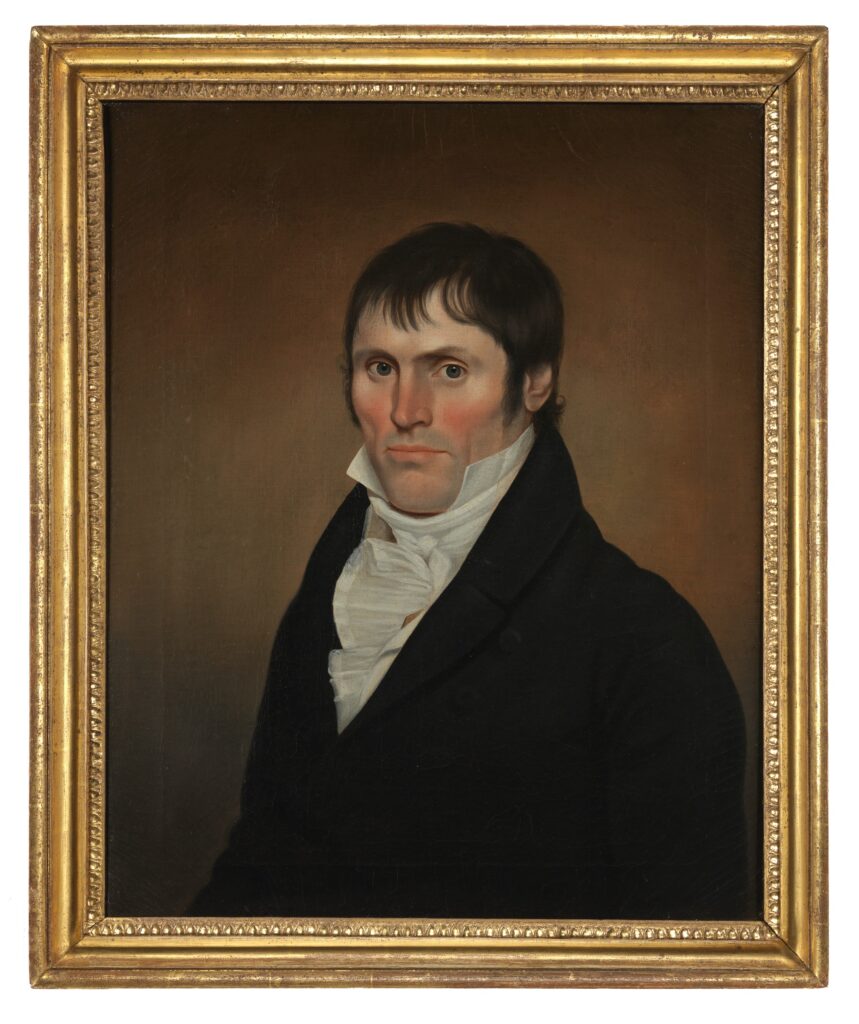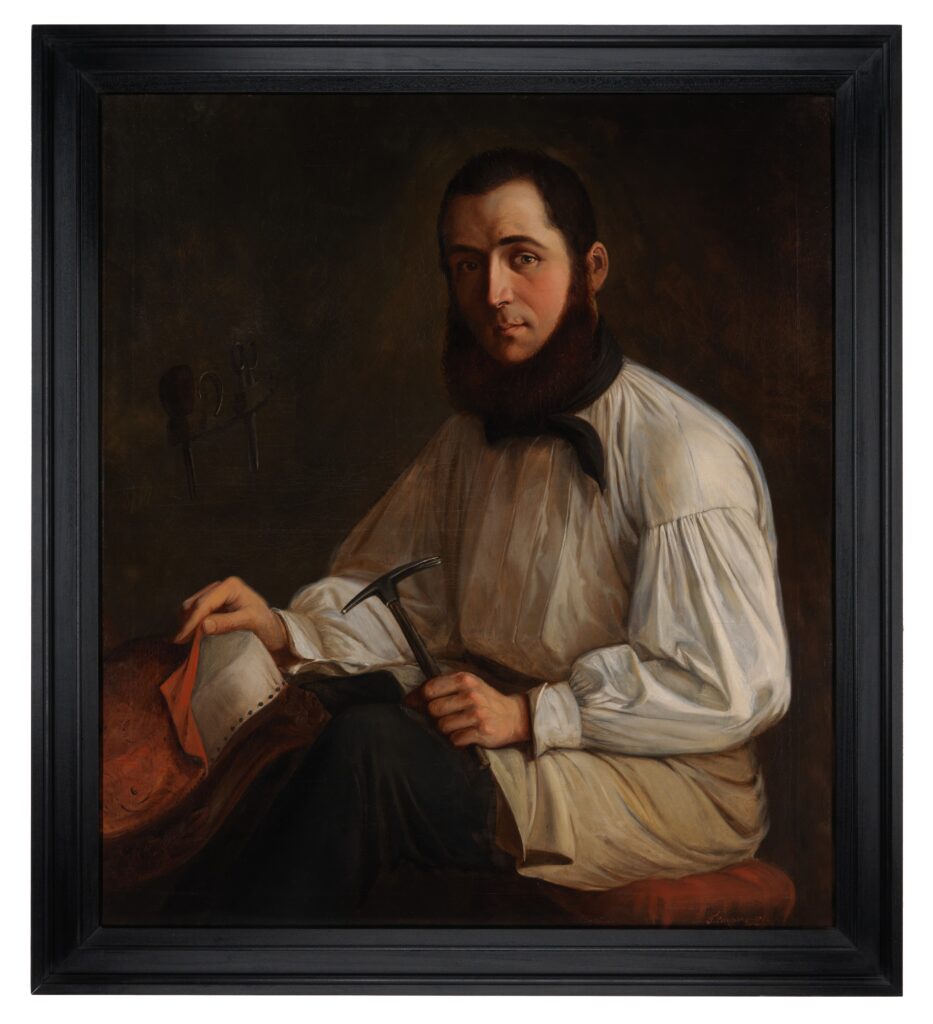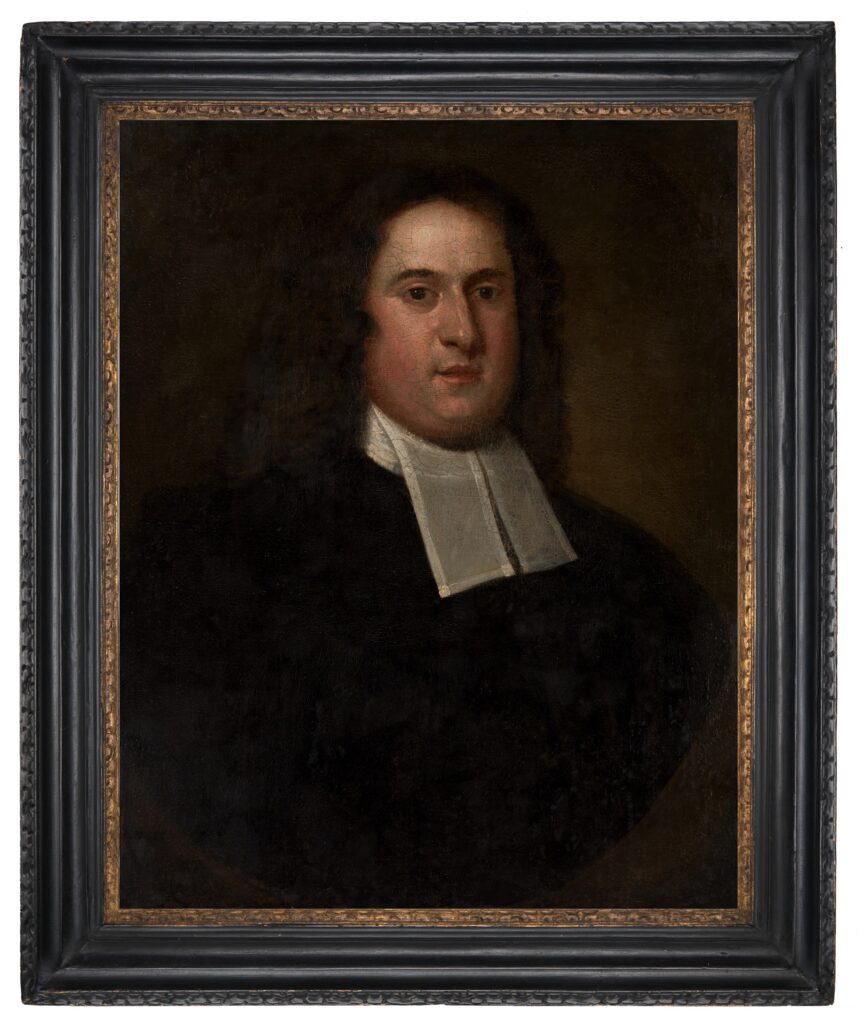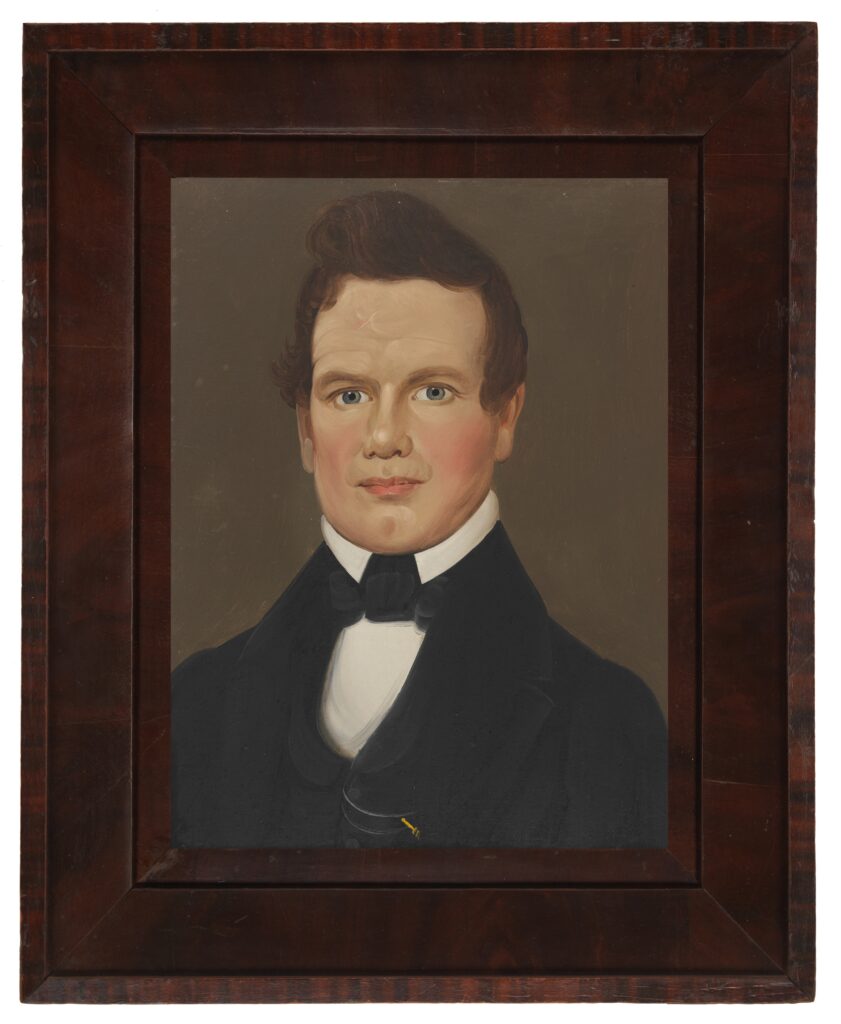 Eustis Estate
Eustis Estate
New England's People
Gallery Three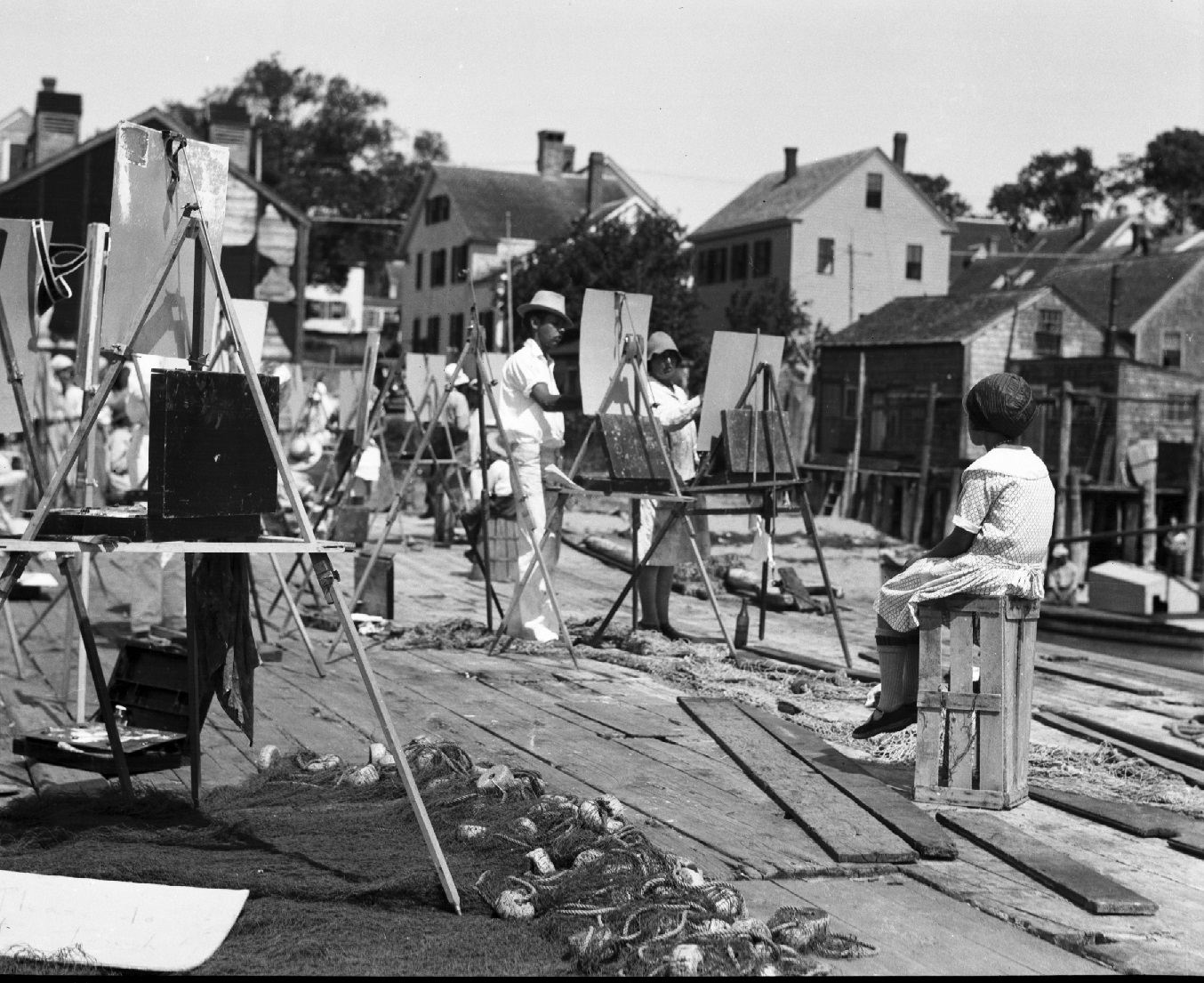
New England would not be what it is without the cultural, racial, and economic diversity of the people who have lived here. Yet not all residents have had the money, time, or connections to get their portraits painted—and thus to show us who they were. This is why most of the portraits we see today depict privileged white people.
Given this reality, the likenesses in this gallery are comparatively wide-ranging, recording not only the powerful but also those who worked for a living or struggled to achieve their goals. This section opens with the unexpected—an imagined portrait of a black man who escaped slavery in the eighteenth century. Historic New England places a high priority on acquiring and highlighting images of people who have traditionally eluded the attention of fine artists.
For a closer look at the paintings in this gallery, click on the images below and use the zoom feature. Some of the paintings have even more information, including historical photographs, additional context, and a glimpse into the work of the conservation lab. (If the images or text seem too small or large in your browser, try clicking ctrl and + or – key to adjust.)
Gallery 1: Land and Sea Gallery 2: At Home Gallery 3: New England’s People Gallery 4: The Wide World
Cyrus Bruce (dates unknown)
Richard Haynes Jr. (b. 1949)
Portsmouth, New Hampshire, 2018
Oil and wax-based crayons on paper
39 ¼ x 29 in.
Gift of the artist
2019.22.1
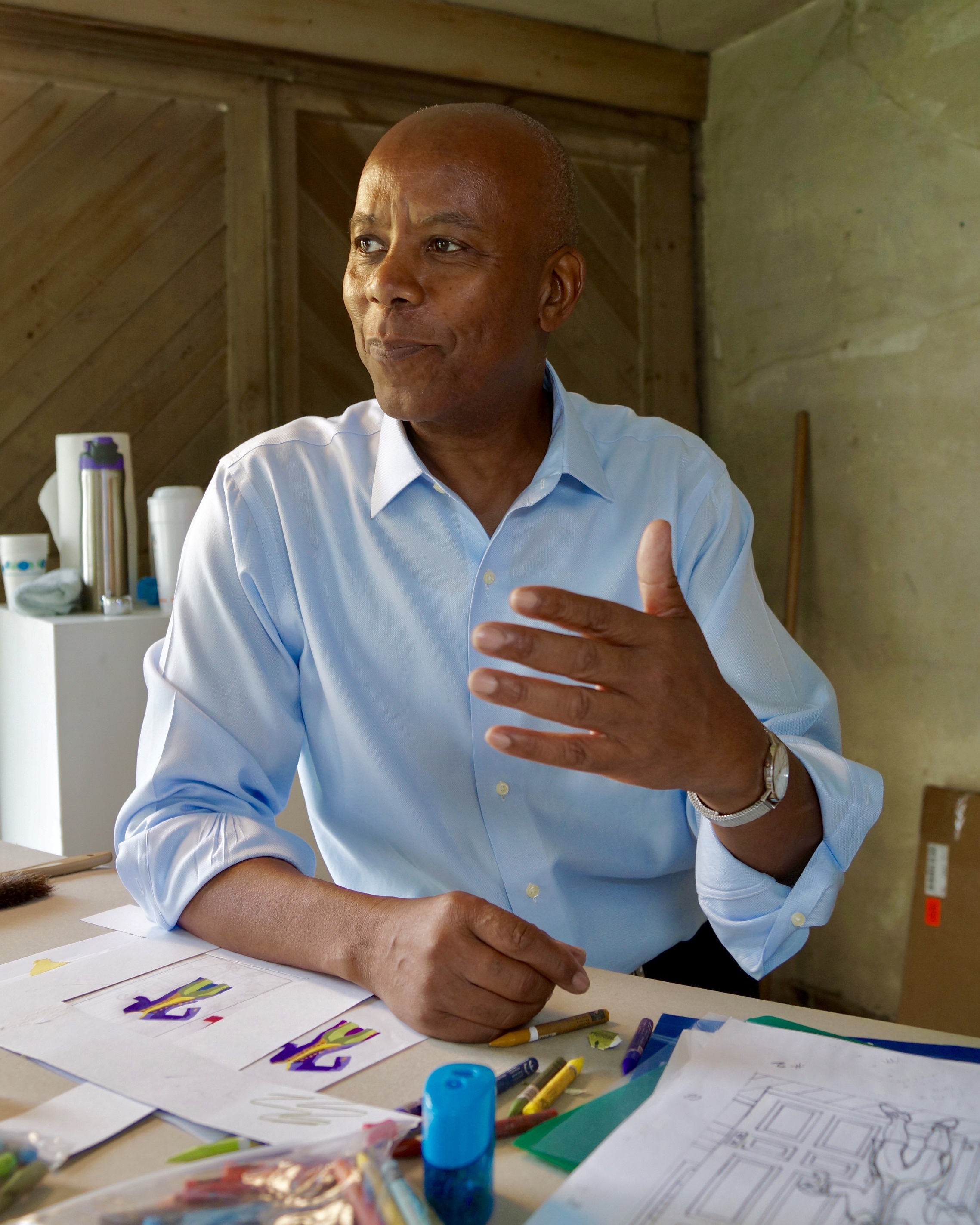
In 1783, Cyrus Bruce, a formerly enslaved black man, began working for Governor John Langdon in Portsmouth, New Hampshire, where he was admired for his “gentlemanly appearance.” Few people in Bruce’s situation were recorded for posterity, so in 2018, when Haynes, an African American artist from Portsmouth, undertook a residency at Historic New England’s Langdon House, he had to imagine the servant’s appearance. This pose suggests Bruce’s authority, and his shadow seems to move forward toward new opportunities. Yet the door knocker resembles a question mark, leading us to wonder about Bruce’s fate. You can see Richard Haynes at work on this portrait in 2018 in the photo at left.
Sally Sayward Barrell (1738-1805)
Joseph Blackburn (d. after 1778)
Portsmouth, New Hampshire, 1761
Oil on canvas
55 7/16 x 48 7/16 in.
Gift of the heirs of Elizabeth Cheever Wheeler, the sitter’s great-granddaughter
1978.115
In 1761 Sally Sayward Barrell was living in her parents’ home in what is now York, Maine, while her husband was on a three-year business trip to England. The portrait shows her as a woman of leisure and insofar as that was true, her leisure may have been supported by enslaved servants who worked around the house. We don’t know who else was living with the Saywards at the time, but we do know that fifteen years later Sally’s father owned at least two men of African descent, Prince and Cato. We know little about them, although our research continues.
Copy of the Self-portrait of Elisabeth Louise Vigée Le Brun (1755–1842)
Elizabeth Adams (1825–1898)
Florence, 1865–74
Oil on canvas
52 ½ x 46 in.
Gift of the artist’s nephew, Boylston Adams Beal
1937.287
According to her biographer, Elizabeth Adams “dared to believe that a woman might dedicate her life to a profession.” Born to a renowned Boston family, Adams headed to France and Italy when she was thirty-four and spent more than a decade there devoted to the study of art.
This is Adams’s copy of the self-portrait of the French court artist Elisabeth Vigée Le Brun painting Queen Marie Antoinette. As one of the few women ever invited to contribute to the collection of artists’ self-portraits at Florence’s Uffizi Gallery, Le Brun’s life story surely appealed to Adams, whose own artistic ambition was realized in 1885 when one of her paintings was chosen for exhibition at the Paris Salon.
Clementina Beach (1774–1855)
Gilbert Stuart (1755–1828)
Boston, 1820–25
Oil on canvas
35 ½ x 30 ¾ in.
Museum purchase
2012.39.1
In the early years of the nineteenth century when there were few opportunities for genteel women to earn a living, Clementina Beach and Judith Saunders ran one of New England’s elite schools for girls, located in Dorchester, Massachusetts. We do not know whether grateful students commissioned this portrait or Beach commissioned it herself. In either case it is an unusually early portrait of a woman who was painted not because of who her family was but for what she herself had achieved.
Man Whittling
Gertrude Fiske (1879–1961)
Massachusetts or Maine, c. 1935
Oil on canvas
36 x 29 in.
Museum purchase
2018.34.1
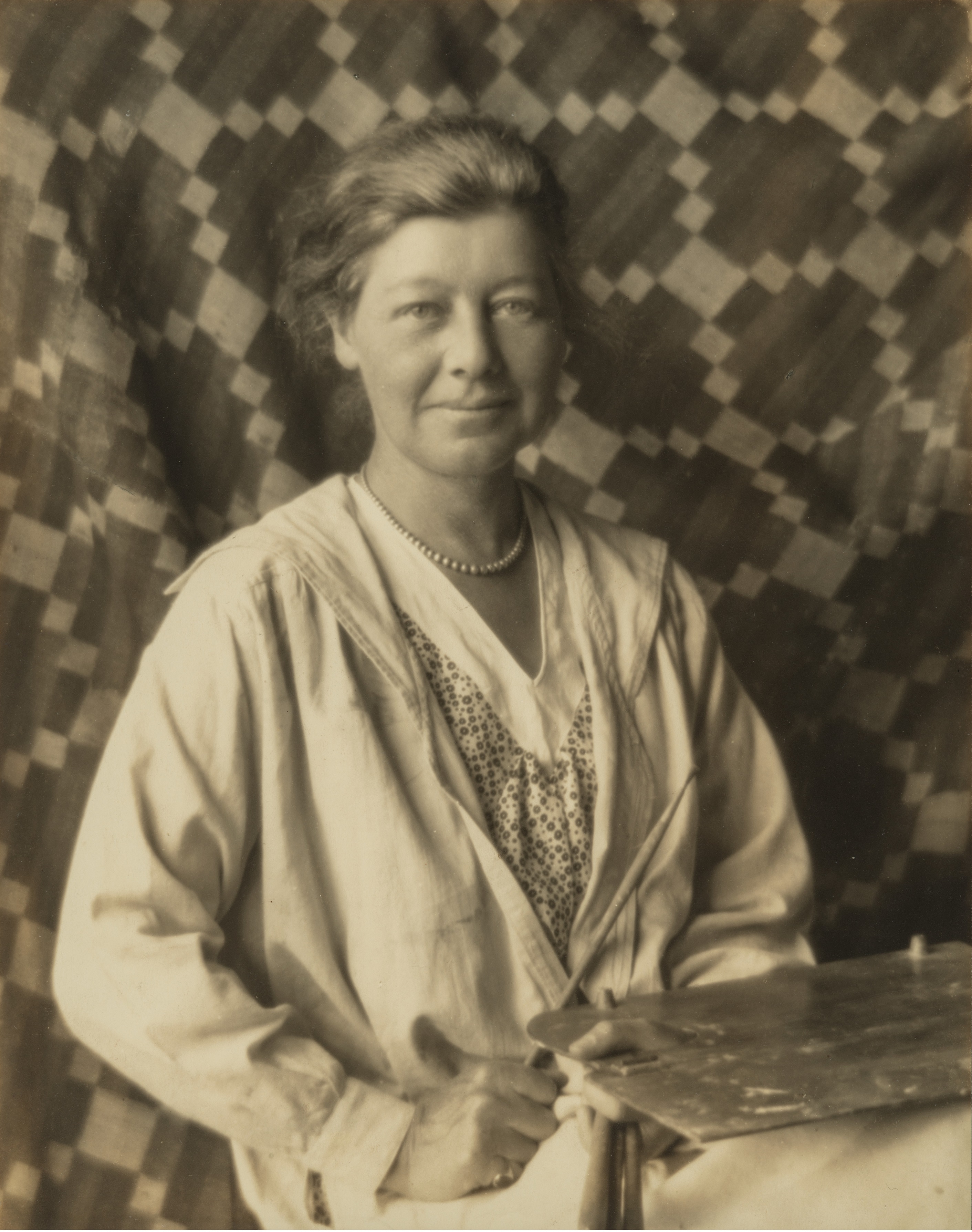
Gertrude Fiske enrolled in the Boston Museum School in 1904, when she was twenty-five. Before long she was extolled in newspaper reviews, won medals at international expositions, and sold her work through one of the region’s most prestigious art galleries. In this painting she posed her model against a colorful geometric backdrop — a favorite quilt that she also chose when she sat for her own photograph. Depicting the model as an elderly woodworker, Fiske used a raking light to emphasize his arthritic knuckles, underscoring the character’s lifetime of working with his hands.
John Codman III (1755–1803)
John Singleton Copley (1738–1815)
Torquay, Devon, England, c. 1800
Oil on canvas
45 ½ x 37 ½ in.
Museum purchase
2016.62.1
Copley was America’s leading portraitist before the American Revolution. In 1774, he moved to London and embraced historical subjects for their prestige, yet continued to earn his living painting portraits. He was the obvious choice to paint John Codman III of Boston, having already portrayed Codman’s father and brother. Copley created this flattering likeness of the prosperous merchant in the English port of Torquay. The hilly landscape and white house do not resemble Torquay, so perhaps they are Copley’s idealization of the Codman Estate in Lincoln, Massachusetts, now an Historic New England property, which he once visited in the 1760s.
Portrait of a Mi’kmaw
Isaac Sprague (1811–1895)
Possibly New Hampshire, 1845–50
Watercolor on paper
15 ¾ x 12 ¾ in.
Museum purchase
2011.117.1
In the mid-nineteenth century when this watercolor was painted, the Mi’kmaq people (Mi’kmaw in the singular) continued to occupy areas of northern New England and southern Canada where they had lived for centuries. They still live in those areas today. Unlike many artists who painted romanticized views of Native Americans, Isaac Sprague, a protégé of the great naturalist John James Audubon, accurately recorded the details of this Mi’kmaw man’s clothing and environment.
Captain Isaac Manchester (1769–1860)
Cephas Thompson (1775–1856)
Bristol, Rhode Island, 1806–07
Oil on canvas
30 7/8 x 25 5/8 in.
Bequest of Evelyn A. Munroe, the sitter’s
great-granddaughter
1964.18
Isaac Manchester of Bristol, Rhode Island, made a fortune as a ship captain engaged in the slave trade. Here, artist Cephas Thompson captures the harsh character distinctive of those engaged in the business of capturing and selling people, particularly slave ship captains. After federal prohibition of transcontinental human trafficking was enacted in 1808, economic depression hit towns like Bristol that were heavily invested in buying and selling people. Ultimately, Manchester was ruined and died in poverty.
Portrait of an Upholsterer
Franciscus Reinerus Hubertus Cuypers (1820–1866)
Boston, 1852
Oil on canvas
46 x 41 ½ in.
Museum purchase
2000.591
Upholstery has always been a labor-intensive trade requiring highly skilled craftsmanship. This man is doing the work typical of a custom shop, using high-quality materials, traditional techniques, and the same tools that upholsterers had used for centuries. While we have not discovered the figure’s identity, he appears to be someone who was proud of his trade. Clearly he had succeeded to such a degree that he could afford to commission a costly portrait.
Reverend Joshua Gee (1698–1748)
John Smibert (1688–1751)
Boston, 1734–36
Oil on canvas
34 ½ x 28 ½ in.
Museum purchase
2011.17.1
From the earliest years of English settlement, religion formed the backbone of the development of New England. Families were required to read the Bible; therefore a high value was placed on literacy and education, which led to the founding of Harvard College and the establishment of newspapers and printing presses. Joshua Gee, the son of a wealthy merchant, graduated from Harvard in 1717, and in 1723 succeeded Puritan clergyman Cotton Mather (who figured infamously in the Salem witch trials) as minister of the Second Church of Boston.
Josiah Kilburn Burrage (1804-1880)
William Matthew Prior (1806–1873)
Boston or Cambridge, Massachusetts, c.1846
Water-based media on board
22 ¼ x 18 in.
Museum purchase with funds provided by an anonymous gift
1988.3
Portrait painter William Matthew Prior established an unusual business model. Instead of competing for the limited number of sitters who could afford a top-of-the-line portrait, he linked the style of a portrait to the sitter’s ability to pay. He produced fully realized portraits with shaping and shadow, a middling range with simpler lines, and at the lowest level, paintings he described as “flat.” These could be completed in an hour’s sitting. This portrait of lumber merchant Josiah Burrage of Cambridge is an example of Prior’s flat style.
